Leila Gharani – Unlock Excel VBA & Excel Macros
Description
Leila Gharani – Unlock Excel VBA & Excel Macros review, Leila Gharani – Unlock Excel VBA & Excel Macros download, Leila Gharani – Unlock Excel VBA & Excel Macros free
Leila Gharani – Unlock Excel VBA & Excel Macros
Unlock Excel VBA & Excel Macros
Go from Beginner to Excel VBA Expert
Wave Goodbye to Tedious Manual Work and
Automate Your Day with Excel VBA
Let’s face it – much of what we do in Excel is a slog.
Yes, it’s fun to discover new Excel features.
Yes, it’s exciting to do trend analysis and spot an opportunity everyone else missed.
Yes, it’s rewarding to see your colleagues react to your beautiful new dashboard.
But that’s the sexy side of Excel. And unfortunately, most of your time isn’t spent on these tasks.
No, much of your work in Excel is slow, tedious, and boring.
Worst of all, it’s manual. You’re like a caveman, stacking rock upon rock using nothing but your blistered hands and gritted teeth.
Well, just like how the pulley automated the lifting of heavy objects, there’s an Excel tool to automate your manual work.
It’s called Excel VBA.
Automate the Boring Stuff So You Can Spend More Time on what Excites You
Why not automate those borings Excel tasks so you can spend more time on what you enjoy? Things like discovering new Excel features, analyzing data, and creating dashboards.
Imagine if you could free up three, five or even ten hour each week by automating manual tasks? How much more time would you have for these other, more exciting Excel tasks?
Not only does Excel VBA make your workday more enjoyable. Learning it also puts you in a position for better work and more pay.
Make Your Resume Stand Out
99% of people have “Proficient in Excel” written on their resume. But how many have “Proficient in Excel VBA”?
Very few.
After taking our course, you’ll have it on your resume. And best of all, you’ll be able to prove it.
Excel VBA is used by the largest and most successful companies across the globe. Here is a list of just a handful of companies that use it:
- Amazon
- Cigna
- Deloitte
- Intel
- JP Morgan Chase
- Microsoft (of course)
- Morgan Stanley
- PayPal
- Tesla
- US Bank
Want to work for one of these companies one day? You’ll boost your chances if you know Excel VBA.
Excel VBA is used across numerous industries, too. Banking, finance, agriculture, healthcare, construction, hospitality – I could go on and on. It’s everywhere.
If you’re looking to stand out and not be just another Excel user, Excel VBA is how you get your resume to the top of the stack.
My History with VBA
I’m Leila Gharani, founder of XelPlus. My first experience with VBA was when I started to work as an in-house consultant at a reputable paper & packaging company.
Together with my team we got sent to our biggest paper factories and we had to review existing processes, optimize these, and implement new ones. We looked at every aspect of the business from sales, procurement, production, HR, waste management, you name it.
I soon realized one of the main bottlenecks was the lack of automation. So much time was spent manually digging through numbers and creating reports. That was when I discovered VBA. There was this aspect of Excel that I hadn’t yet uncovered which could save my clients chunk loads of time.
I started teaching myself VBA by going through books, forums, and hundreds of blog posts. I soon started implementing VBA solutions for my clients, so they didn’t have to repeat the same tasks over and over again. They could just click a few buttons in Excel, go for a coffee and once they got back to their desk their report was ready.
The new files were a relief. They were designed to be user-friendly so anyone could use them. That’s the power of VBA. You can tailor-fit your Excel app as you need.
I’ll be teaching you how in this course.
I Wanted this Course to Be Different
No, my course isn’t the only VBA course out there. I know you have other options to learn this topic.
You could learn from another Excel expert, you could buy a course on Udemy, and you could even watch YouTube videos, piecing things together.
So, I asked myself, “How can I offer something different and better than all the other options?”
That’s when it hit me.
Through my research, I found all the other VBA training and courses have one thing in common: They only give you one piece at a time. They don’t give you the entire puzzle. They also don’t give you ready-made code books for quick fixes. Or real-world projects to learn from.
At that moment, I knew how to structure our VBA course.
Learn VBA by Building Projects and
See How Each Piece Contributes to the Puzzle
A VBA project is like a completed puzzle. Problem is, other trainings only give you a handful of pieces – and from all different puzzles!
They give you three pieces from the hot air balloon puzzle. Then, they toss you two pieces for the basket of fruit. And finally, a corner piece for the mountain lake.
How the heck are you ever supposed to build a finished project this way!?
It’s a confusing way to teach VBA, in my opinion.
Instead, in our course, you’ll build three separate projects. Each project was specifically chosen to teach you different, important features of Excel VBA.
Finally – and this is the magic – you only complete projects using techniques you’ve already learned.
In other words, we teach you the pieces of the puzzle, and then put them together into a finished project.
It’s a layered, step-by-step approach that will teach you Excel VBA faster than anything else.
Your First Project
Automated Table of Contents
As I mentioned, there are three main projects you’ll complete.
In this first project, you’ll create a tool to automate a table of contents inside Excel. You’ll complete the project using skills you’ll learn in that section’s lessons, such as:
- Getting familiar with the Visual Basic Editor
- Creating macros and 7 different ways to run them
- Understanding the difference between macros and VBA
- The most useful built-in VBA functions
- Debugging so you can quickly find & fix errors
After learning these techniques, plus more, you’ll tackle the table of contents project. Not only will you have a finished, working file. You’ll have all the skills you learned along the way.
Your Second Project
Create a Sales Reporting Tool
Using what you’ve already learned, your next mission will be to create a regional sales reporting tool.
But your existing skills won’t be enough for this (slightly) more difficult project. That’s why, before entering the project area, you’ll enter the classroom.
You’ll first learn these necessary techniques:
- Loops! These little guys will become your best friends because they’ll automate so much for you
- Arrays, which allow you to quickly run procedures
- How to create Excel tables using VBA
- Telling Excel to open folders and files, using VBA
- How PivotTables work with VBA
Plus more.
Once you’ve completed these lessons, you’ll download the project workbook and create your sales reporting tool. You’ll be surprised at how easy it is after watching the previous lessons.
Finally, you’ll move on to tackle the third project.
Armed with these foundational skills, you’ll be ready for your second project.
Your Third Project
Create an Invoicing Tool
Here’s why I love this one…
You know how I’m all about applying Excel to solving real-world problems, right? Application matters more than theory.
Well, this project is based off an actual project I created during the time I was a freelancer. It’s a pretty sweet tool, I’ve got to say. Our clients loved how easy we made it for them to send invoices.
As a lead-up to creating this invoicing tool, you’ll learn these critical VBA skills:
- How to make applications talk to each other, like making Excel talk to Word or PowerPoint
- How to save specific sheets as PDF files
- Running events like opening a workbook, printing, or changing the color of a range of data
- How to add external links and comments
- How to create submission forms and add buttons, fields, and other ways to “dress up” your forms
With these skills, you’ll be fully prepared to create the invoicing tool. I dare say it’ll be fun, too.
Each project includes-step-by step directions so you’re never lost. Simply follow me and you can’t go wrong.
Also, each project comes with a code-free version of the file for download, so you can play around with the final product and see how it works.
You Can Finally Tweak Files You Find Online
These projects will teach you most of what you’ll ever need to know about Excel VBA. Complete them, and you’ll be in the 1% of Excel users.
Still, there will no doubt be times where you’ll want to find an existing model instead of creating one from scratch. You’ll head to Google and search for what you need. And because Google has everything, you’ll find it.
But no model perfectly suits your needs out of the box.
That’s okay, because after you’ve taken this course, you’ll have the skills to tweak those models you find on Google.
Whether you create models from scratch or tweak models you get from others, after this course, you’ll be able to free up hours of your time using VBA.
Ready to join the course and get started?
Course Curriculum
Introduction & Scope
- Course Structure & Content
- Important Compatibility & Setup Information
- 🔻Course Resources: Download Course Project Files
- Course Expectations
- 🛣️ Course Outline for Quick Reference
- 🤔 Quick Check-in
Section 2: Your First Excel Macro
- Overview: Macros & Visual Basic Editor (VBE)
- Steps to Your First Macro Recording
- Visual Basic Editor: What You Need to Know
- Project: Dynamic Cell Selection (Special Cells) – Perfect for Flexible Macros
- Project: Copy (Consolidate) Data – Absolute versus Relative Macro Recording
- 7 Ways to Run Macros / VBA code (incl. creative & modern buttons)
- 🆕 OFFICE 365 Update: Change in Excel Comments to Notes
- Activity: Record a Macro that Deletes all Notes/Comments
- What’s the Difference Between Macros and VBA?
- 🤔 Quiz: Test Your Knowledge on Macros
Section 3: The Object Model
- Overview: VBA Object Model (What you need to become an expert in VBA)
- VBA’s Code Reference Object Library
- VB Color Guidelines & Keyboard Shortcuts
- Excel VBA Object Model
- Object Properties
- Object Methods
- How to Find the Object, Property & Method
- Conclusion: Key Takeaways & Message from Me
- 🤔 Quiz: Test Your Knowledge about the Object Model
Section 4: Referencing Ranges, Worksheets & Workbooks with VBA
- Overview: Referencing Ranges, Worksheets & Workbooks
- Referring to Ranges & Writing to Cells in VBA
- Most Useful Range Properties & Methods
- 4 Methods to Find the Last Row of your Range
- Copying & resizing a variably sized range
- Properly Referencing Worksheets
- Properly Referencing Workbooks
- Activity: Save a Hard-coded Copy of Workbook
- Project: Save Hard-coded Copy & Macro-free version of workbook
- 📝 Key Takeaways for Referencing Ranges
Section 5: Working with Variables
- Overview: Role of Assignment & Variables
- Data Types for Better Performance
- Declaring Variables, Arrays & Constants (Role of Option Explicit)
- Using Object Variables (Set statement)
- Scoping Variables
- Activity: Revisit Hard-coded Workbook Project & Use Variable Assignment
- 🤔 Quiz: Test Your Knowledge on Variables and data types
- 📝 Key Takeaways for Working with Variables
Section 6: Looping through Collections & Making Decisions
- Overview: Why Collections are a VBA Essential
- With & End With for Easier Code Writing
- For Each to Loop Through Collections (sheets, ranges etc.) in one go
- IF Then (Else, ElseIF) for Conditional Outcomes
- Select Case as Alternative for Many IF Statements
- Goto Statement to Change Program Flow
- Activity: Get the Number of Formulas on the worksheet
- Project: Get the Number of Formulas on the Worksheet
- 🎁 Bonus: Un-hiding All Sheets in One Go (3 Methods)
- 📝 Key Takeaways for Collections & Decision Making in VBA
Section 7: Useful Built-in Functions
- Overview: VBA versus Worksheet Functions
- Most Useful VBA Functions
- Message Box (also with Yes, No buttons)
- Input Box (VBA InputBox Function)
- Input Box that can Select Ranges (Excel InputBox Method)
- Activity: Show Top 3 Values in a Message Box Based on Range Selected
- Project: Show Top 3 Values in a Message box based on Range Selected
- 📝 Key Takeaways Built-in Functions
Section 8: Debugging, Error Handling & Procedure Scope
- Overview: Debugging, Handling Errors & Procedure Scope
- Debugging Options: Watch, Locals, Immediate Windows & More
- Error Handling: Different Methods
- Faster Code by Suppressing Pop-ups & Flickering Screen
- Procedure Scope & Running one Sub from Another
- Passing Arguments to Sub Procedures (By Ref, By Val)
- Activity: Get the Total Number of Formulas (or Comments) Used in a Workbook
- Project: Get the Total Number of Formulas (or Comments) Used in a Workbook
- 📝 Key Takeaways Debugging, Error Handling & Course Map Status
Main Project #1: Create a Tool to Automate Table of Contents (TOC)
- Project overivew: Table of Contents (TOC) with one Click
- TOC Project: The Basics
- TOC Project: Adding Hyperlinks
- TOC Project: Testing the VBA Code
- TOC Project: Adding Error Handling & More Checks
- TOC Project: Adding to Personal Macro Workbook (Make it Available to all Files)
- 🛣️ First Milestone Completed!
Section 10: Looping in VBA (Controlling the Flow of Code)
- Section Overview: Looping in VBA
- For Next Counter Loops (Simple Example)
- For Next Nested Loop (Loop through Text & Cells)
- For Next Reverse Loop (Delete Filtered/Hidden Rows)
- Do Until & Do While Loop
- Practical Example of Do Loop (with Inputbox)
- Find Method for Quicker Lookup Results
- Find Method with Do Loop – Multiple Matches
- Add a Timer to Test & Speech to Inform
- Activity: Document all Comments in Workbook in a Sheet
- Project: Document all Comments in Workbook in a Sheet
- 📝 Useful VBA Statements & Key takeaways for Looping in VBA
Section 11: Working with Arrays
- Overview: Working with Arrays in VBA
- One Dimensional Arrays (and transferring back to sheet)
- Dynamic Arrays (size adjusts depending on a condition)
- Preserving Dynamic Arrays (adding more elements to the existing array)
- Two Dimensional Arrays
- Variant Arrays: Quick Method to Write to Cells
- Activity: Create a New Worksheet per Company with Specific Information
- Project: Create a New Worksheet per Company with Specific Information
- 📝 Key Takeaways Arrays
Section 12: Working with Files, Folders & Text Files
- Overview: Working with Folders & Files
- DIR Function: Check if Files or Folders Exist
- GetOpenFileName Method: User Selects a File
- FileDialog Property: Loop Inside a Folder
- Create CSV File from Data in Excel
- Printing & Writing to Text Files for More Control
- Activity: Export Data to Text file (Fix Delimiter to Semicolon)
- Project: Export Data to Text file (Fix Delimiter to Semicolon)
- 📝 Key Takeaways Files & Folders
Section 13: Excel Tables, Formulas & Pivot Tables
- Overview: (Pivot) Tables & Formulas
- Using Excel Formulas in VBA
- Excel Tables: Use the Right Syntax
- Pivot Tables & VBA: What you Need to Know
- Activity: Update Existing Formulas with VBA by Adding IFERROR
- Project: Update Existing Formulas with VBA by Adding IFERROR
- 📝 Key Takeaways (Pivot) Tables & Formulas
Main Project #2: Sales Regional Reporting Tool
- What You’ll Learn (& Should be Aware of..)
- Project Overview: Regional Sales Reporting Tool
- Importing Data from Multiple Files using MultiSelect
- Setting up a Template as the Basis for Different Reports
- Exporting Reports as Excel files (Pivot Table & Hard Coded Reports)
- Fine-tuning Report Export Procedure (Double-check if user wants to overwrite)
- Setting up Automatic Export of Text File (Fix delimiter in CSV to Semicolon)
- Track the List of Tasks Completed with VBA (11:16)
- Final Touches & Creating Interface to Hide Specific Tabs with a Password
- 📝 Key Takeaways & Tips for VBA based Excel Tools
- 🛣️ Second Milestone Completed!
Section 15: Interacting with Other Applications (Word, PowerPoint etc.)
- Overview & Important Concepts when Interacting with Other Applications
- PDF: Save Specific Sheets as a PDF File
- Email: Automatically Create Personalized Emails with Attachments
- Microsoft Word: Create Personalized Letters in Word from Excel
- Microsoft PowerPoint: Export Excel Sheets to PowerPoint Presentation
- 📝 Key Takeaways when Working with other Applications
Section 16: Workbook and Worksheet Events
- Overview & What are Event Procedures?
- Workbook Events, Toggle Full Screen (Activate, Deactivate, Open, Close)
- Worksheet Selection Change: Dynamic Font Color of Selected Range
- Refresh PivotTables Automatically & Concept of Range Intersection
- Resetting a Dependent Drop-down when the first Drop-down is Changed
- Activity: Link Page Header to Cell Value (BeforePrint Event)
- Project: Link Page Header to Cell Value (BeforePrint Event)
- 📝 2 Useful Tips when Working with Events & Key Takeaways
Section 17: Working with Userforms & ActiveX Controls
- Overview: UserForms & ActiveX Controls
- ActiveX Controls: What you Need to Know
- ActiveX Check Box to Fix Scroll Area & Toggle Screen Settings
- ActiveX to Show and Hide Help
- ActiveX Combo Box for Easy Sheet Navigation (Great for Larger Workbooks)
- ActiveX to Show or Hide Other ActiveX controls (eg. Actual & Budget reporting)
- UserForm Basics: What You Need to Get Started
- UserForm for Data Entry (Input & Check Boxes)
- Practical UserForm to Document External Links & Comments (Combo Box & Option button)
- 🎁 Bonus: ListBox to Print Multiple Pages in ONE GO
- UserForm Checklist & Course Map Status
Main Project #3: Invoice Generation Tool
- Tool Overview: What You Will Learn
- Setting up an Input UserForm to Collect Master Data
- Working with Multi-Column ListBoxes
- Edit Master Data with UserForm
- Searchable ListBox (with Selection Change event)
- Enhanced Searchable ListBox: Write Selection back to Excel Table
- MultiPage UserForm to Create Invoices & Email (Setup)
- Export PDF & Excel Workbook for Each Invoice based on ListBox Selection
- Create Email in Outlook & Attach PDF Invoice
- Final Updates & Debugging
- 🛣️ Last Milestone Completed!
Section 19: Create your own Custom Functions
- Section Overview: Function Procedures
- Setting up a Simple Function (including Optional Arguments)
- Function to Calculate Age (Result in Years & Months)
- Functions that Split Text and Numbers from Cell Value
- Using Functions in Sub Procedures
- Activity: Function That Sums based on Cell Color
- Project: Function That Sums based on Cell Color
- 📝 Key Takeaways Function Procedures in VBA & Course Map Status
Section 20: Working with Charts
- The Chart Object Library & Section Overview
- Create and Modify a Chart with VBA
- Animated Charts: Different Methods
- Show Charts inside UserForms
- 📝 Key Takeaways: Charts
Summary & Final Words
🎆 Your Next Steps & more Learning
“I’m already extremely impressed with the organization and professionalism of this course. The course also has exactly what I need to tackle important problems at work. Very good!”
– Kirsch Mackey
“Leila has the amazing ability to not only teach this highly difficult subject in a comprehensible way, but also to combine it with interesting and useful examples plus fancy layouts. I’m very pleased with this Course and can’t wait to Code my own Little Tools… Thank you so much!”
– Alexander Brück
You Don’t Need a Programming Background
No, you do not need to have experience with computer programming to take this course.
In fact, if you’ve been interested in getting into programming, this is a good place to start.
Don’t let the programming nature of this course scare you. If you can use Excel, you already have the type of brain that can learn VBA.
“Very professionell approach and very well spoken and detailed information outlined in a good way. I`m a big fan from what I have seen so far. If you are going to grasp the “thinking” and learn the logic behind excel, VBA and different concept from a course. Leilas courses is the one!”
– Niclas Johansson
“If you are interested in learning about macros without much knowledge of programming and some knowledge of Excel, This course is your way to go. Best wishes to Leila.”
– Dishank Gupta
Who is this for?
This is best for people in three groups.
You’re brand new to VBA
You’re starting from scratch. You don’t know a loop from a macro. You want to learn VBA, but you need baby steps.
You’ve got some experience with VBA
You’ve dipped your toe into VBA. Nothing too crazy. You know there are better methods to what you’ve been doing.
You’re a VBA power user
You use VBA every day. Given your foundation, why not get the most mileage out of your experience? You’ll pick up new tools and methods faster than beginners.
In all these scenarios, this course is for you.
Our Policies
A. Product Quality
We will provide GOOD quality of courses fast. If any issue, email: [email protected].
We sure that your problem will be support as soon as possible.
B. Digital Shipping Proceess
After your payment, we will review your payment, Then, we will send you PCLOUD LINK OF COURSES through email in 3 – 8 hours. If any issue, we will inform you as soon as possible.
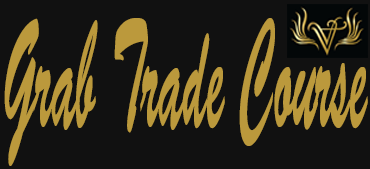
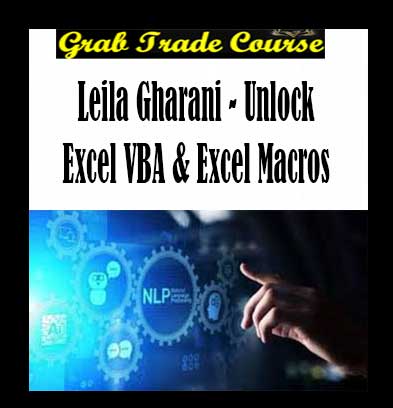

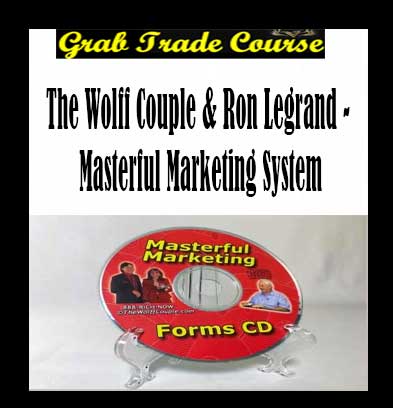
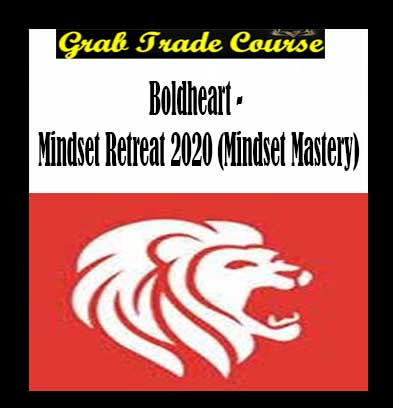



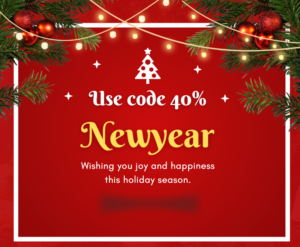
Reviews
There are no reviews yet.